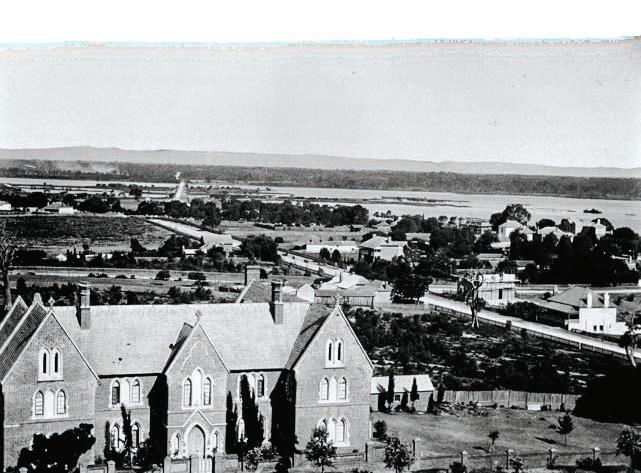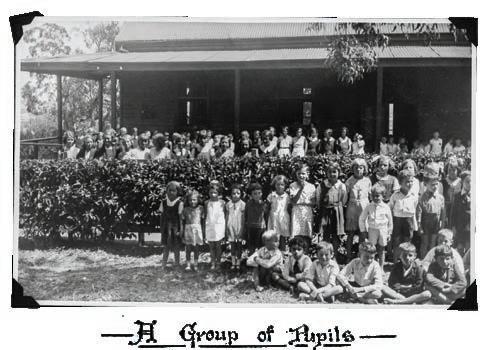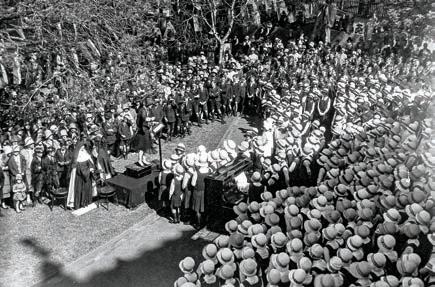
4 minute read
Mercy Sisters 175th Anniversary
Sisters of Mercy remembered for equal, caring and compassionate outlook
It was 1845 when the newly elevated Perth Bishop John Brady came to call on the Sisters of Mercy in Dublin.
As recalled by the Sisters, Bishop Brady was ascetic, undoubtedly holy, but also naive, misguided and ill-informed, seeking sisters to join a missionary band which he had convinced (and had somehow convinced himself) was to tend to more than 5,000 European children and two million Aboriginal peoples awaiting Catholic instruction in the 16-year-old Swan River Colony. Fired by Bishop Brady’s words, the Sisters of Mercy agreed to send three sisters and three novices on this mission and Ursula Frayne was selected as their Superioress. The Irish sisters were part of a group totalling 27 missionaries from Spain, Italy and France. Ursula Frayne and her six companions sailed up the Swan River from Fremantle to the young, struggling township which, in time, would become the modern, vibrant, multicultural city of Perth. With the vision of creating a better, more equal, caring and compassionate outlook for all Western Australians, no matter who they were, the first Sisters of Mercy arrived in Perth, Western Australia on Friday 9 January 1846. The sisters arrived in the blistering summer heat, dressed in their dark woollen habits, with no accommodation prepared, and a small, dominantly Protestant community in the city hostile to their presence. Their first experiences in the colony were in stark contrast to the vision of millions of souls ripe for conversion inspired by Brady. There were, in fact, only 337 Catholics in the colony, and an unspecified, but not large, number of Aboriginal peoples. Recounting this day in her letter to the sisters back in Dublin, Sr Ursula wrote, “We had a most delightful sail.


“The weather was glorious; a strong breeze tempered the heat of the burning sun, and filling our sails, propelled us along so smoothly that we hardly felt the motion. The scenery was charming, the river broad and winding. Nature here had an undivided empire; human industry had literally done nothing”. Despite their initial trials, the Sisters wasted no time commencing their mission, opening their first school on 26 January 1846. When only one Catholic It was, instead, her role as an educator that is still “ ... her role as an girl turned up at the newly minted Mercy School (a number which rose only to five after a week), Sr clearly evident today. Mercedes College in Victoria Square at Perth’s centre traces its origins back to Ursula’s first school of 1846 and was the first school AustraliaUrsula wrote: “[t]his was educator that is wide to be founded by a religious order, the first still clearly in rather discouraging to persons who had come permanent school in Western Australia, and Western Australia’s first secondary school. evidence today. a journey of sixteen thousand miles in order The Sisters went on to open the first secondary school in Western Australia in 1849. to teach some at least of Nearly two decades after they first arrived in the four thousand little ones … I fancy His Lordship Australia, the Sisters of Mercy established the St had mentally included the Aboriginal natives who Joseph’s Girls Orphanage in Victoria Square. might possibly number 4,000 roaming about the Eight years later, the Sisters took over wilds of Australia, and whom it might be possible to management of the Subiaco Boys Orphanage, Christianise”. situated on the current site of MercyCare’s But by September of that year it had grown to 60 Wembley campus. In 1901, the Sisters moved St children, the largest school ever known in Perth. Joseph’s to the Subiaco site, where they remained Although they did end up being visited quite until March 2002. regularly by the Aboriginal peoples, Sr Ursula and For the next century and a half the Sisters of her sisters quickly realised that converting the Mercy delivered education, welfare and health Aboriginal people and their families to Catholicism services in Perth and beyond without judgement; was not ever going to be their chief mission in caring for all. Australia. Courtesy Institute of Sisters of Mercy of Australia However, the original ideal of atheist conversion, and Papua New Guinea and MercyCare.which had brought her to the colony in the first place, proved remarkably tenacious. This ideal underpinned the establishment of the so-called Benevolent Institution – a small residential house for Aboriginal children and destitute European children adjacent to the sisters’ convent. The greatest legacy of Ursula Frayne in Perth, however, was not to be in the problematic moral minefield of Aboriginal care and conversion.

An original photo of Ursula Frayne. Photo: Institute of the Sisters of Mercy Australia and Papua New Guinea







